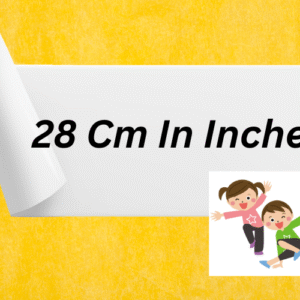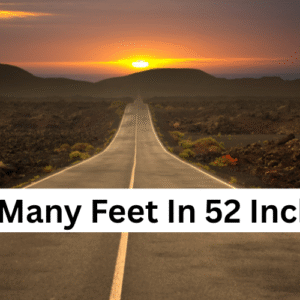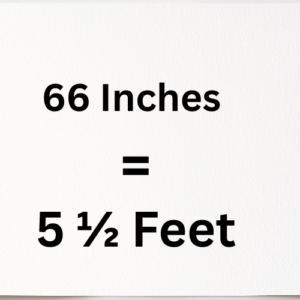Understanding the length of 10 meters can be challenging without context, but by comparing it to familiar objects and exploring its applications, this measurement becomes vivid and relatable. Ten meters, equivalent to approximately 32.8 feet, is a distance that frequently appears in everyday life, sports, construction, and science.
This comprehensive article explores 12 common things that are approximately 10 meters long, providing detailed descriptions for each to help you visualize this length. Additionally, we’ll delve into conversions, practical applications, historical perspectives, and hands-on methods to measure 10 meters, creating a thorough understanding of this versatile measurement. By the end, you’ll see 10 meters not as an abstract number but as a tangible distance woven into the fabric of daily life.
What is a Meter?
To ground our exploration, let’s define the meter. The meter is the base unit of length in the International System of Units (SI), defined since 1983 as the distance light travels in a vacuum in 1/299,792,458 of a second. This precise definition ensures global consistency in measurements. Historically, the meter was conceived during the French Revolution as one ten-millionth of the distance from the Earth’s equator to the North Pole along a meridian, a concept that standardized measurements across nations. Ten meters is simply ten times this unit, equating to roughly 32.8 feet, 10.9 yards, or 1,000 centimeters. It’s a manageable yet significant distance, appearing in contexts from sports fields to architectural designs.
Converting 10 Meters to Other Units
To make 10 meters relatable across different measurement systems, here’s a conversion table:

| Unit | Conversion from 10 Meters | Approximate Value |
| Feet | 1 meter ≈ 3.28084 feet | 32.8084 feet |
| Yards | 1 meter ≈ 1.09361 yards | 10.9361 yards |
| Centimeters | 1 meter = 100 cm | 1,000 cm |
| Millimeters | 1 meter = 1,000 mm | 10,000 mm |
| Kilometers | 1 meter = 0.001 km | 0.01 km |
| Inches | 1 meter ≈ 39.37 inches | 393.7 inches |
| Miles | 1 meter ≈ 0.000621371 miles | 0.00621371 miles |
Conversion Breakdown
- Metric System: The metric system’s base-10 structure makes conversions straightforward. Ten meters equals 1,000 centimeters or 10,000 millimeters, useful for precise measurements in science or engineering. It’s also 0.01 kilometers, a small fraction relevant for larger-scale contexts like geography.
- Imperial System: In countries like the United States, where feet and yards are common, 10 meters is approximately 32.8 feet or 10.9 yards. These conversions help bridge the gap for those less familiar with metric units.
- Inches and Miles: Ten meters translates to 393.7 inches, a useful reference for detailed measurements, and 0.00621371 miles, highlighting its small scale in long-distance contexts.
These conversions provide flexibility, allowing 10 meters to be understood globally, whether in metric or imperial systems.
Visualizing 10 Meters
To grasp 10 meters, comparisons to familiar objects are invaluable. Beyond the 12 specific examples below, consider these general visualizations:
- Walking Distance: An average adult stride is about 0.75 meters, so 10 meters takes roughly 13 to 14 steps.
- Room Dimensions: A spacious room might be 5 meters by 5 meters, with a 10-meter diagonal.
- Sports Context: Ten meters is one-tenth of a 100-meter sprint or two-thirds of a basketball court’s width.
These anchors set the stage for the 12 common things that embody 10 meters, each described in detail below.
12 Common Things That Are 10 Meters Long
Below are 12 common objects or scenarios, each approximately 10 meters long, with detailed descriptions to bring this measurement to life.
1. School Bus

A standard school bus, like those used to transport students in many countries, measures approximately 10 meters in length. These yellow buses are a familiar sight, designed to carry dozens of children with rows of seats and safety features. Picture a school bus parked at a school entrance or idling at a bus stop; its length from front bumper to rear is a near-perfect 10 meters. This makes it an excellent reference for urban and suburban environments, where buses are a daily presence. The next time you see one, note its length as a practical embodiment of 10 meters.
2. Two Average Cars Parked End-to-End

The average car, such as a sedan or compact SUV, is about 4.8 to 5 meters long. When two cars are parked bumper to bumper, their combined length is approximately 10 meters. Imagine a parking lot with a Honda Civic and a Toyota RAV4 aligned end-to-end; this setup is a common sight in driveways, parking garages, or streets. This visualization is particularly useful in urban settings, where cars are ubiquitous, providing a relatable way to estimate 10 meters without specialized tools.
3. Large Living Room

In spacious homes, a large living room might measure 5 meters by 5 meters, with a diagonal of approximately 7 to 10 meters depending on the exact shape. Picture a cozy living area with sofas, a coffee table, a TV, and perhaps a fireplace. Walking from one corner to the opposite corner, especially in a rectangular room slightly longer than wide, can approximate 10 meters. This makes the living room a relatable indoor reference, especially for those planning furniture layouts, home renovations, or interior design projects.
4. Four Swimming Pool Lanes

In an Olympic-sized swimming pool, each lane is 2.5 meters wide. Four lanes side by side span exactly 10 meters. If you’ve watched a swim meet or swum in a competitive pool, imagine standing at the pool’s edge and looking across four lanes—this width is precisely 10 meters. This is a vivid sports-related reference, as swimming pools are standardized globally, making the 10-meter span of four lanes a reliable and accessible visualization for athletes and spectators alike.
5. Standard City Bus

A standard city bus, used for public transportation in urban areas, is often 10 to 12 meters long. Many single-decker buses, such as those in municipal transit systems, are close to 10 meters, especially smaller models designed for city routes. Picture a bus pulling up to a stop, its doors opening to let passengers board. Its length, from front to rear, is a practical illustration of 10 meters, making it a common urban reference for this distance.
6. Basketball Court Width (Partial)

A standard basketball court, as defined by FIBA or NBA regulations, is 15 meters wide. Ten meters represents about two-thirds of this width. If you’ve played or watched basketball, imagine standing at one sideline and walking two-thirds of the way across to the other side. This distance is significant in gameplay, influencing strategies like zone defense or court positioning. For basketball enthusiasts, this partial width is a familiar way to visualize 10 meters in a sports context.
7. Small Pedestrian Bridge

Small pedestrian bridges, found in parks, campuses, or urban areas, often span about 10 meters. These bridges might cross a stream, a narrow road, or a railway track, providing safe passage for walkers. Picture a simple footbridge in a local park, perhaps made of wood or metal, with railings on both sides. Its length from one end to the other is likely close to 10 meters, offering a tangible outdoor reference for this measurement in natural or designed environments.
8. Medium-Sized Backyard

In suburban homes, a medium-sized backyard might measure around 10 meters in length, from the back door to the far fence or the edge of a garden bed. Imagine a backyard with a patio, a lawn, and perhaps a small garden or play area. This length is relatable for homeowners planning landscaping, installing a fence, or setting up outdoor furniture. Walking across such a backyard gives a direct sense of 10 meters, grounding the measurement in domestic life.
9. Three-Story Building Height

A single story in a building, including the floor and ceiling structure, is typically 3 to 4 meters tall. A three-story building, such as a small apartment complex, office, or retail space, might have a total height of 9 to 12 meters. Ten meters is a close approximation of this height, making it a useful reference for vertical distances in architecture. Picture standing at the base of a three-story building and looking up; the height to the roof is roughly 10 meters, a common scale in urban design.
10. Soccer Field Penalty Area (Partial)

In soccer, the penalty area surrounding the goal extends 16.5 meters from the goal line to the edge of the area. Ten meters is approximately two-thirds of this depth, or roughly the distance from the penalty spot (11 meters from the goal) to just inside the penalty area. For soccer players and fans, this distance is familiar, as it’s critical for positioning during free kicks or penalties. Visualizing this segment of the penalty area anchors 10 meters in the context of a globally popular sport.
11. Large Delivery Truck

A large delivery truck, such as those used by courier services like UPS, FedEx, or Amazon, is often around 10 meters long. These trucks are designed to carry substantial cargo, with a boxy cargo area and a cab for the driver. Picture one parked at a warehouse or delivering packages in a commercial area; its length from front to rear is a close match for 10 meters. This makes delivery trucks a practical reference for this distance in logistics and urban settings.
12. Ten Adult Strides

The average adult stride length is about 0.75 to 1 meter, depending on height and walking style. Walking 10 meters typically takes 10 to 13 strides for most people. This is a hands-on way to experience 10 meters—next time you’re in an open space, count out 10 to 12 steps and note the distance covered. This exercise is particularly useful because it requires no tools, only your body, making it an accessible and personal way to internalize 10 meters.
Practical Applications of 10 Meters
The 10-meter length is not just a static measurement; it has practical applications across various domains, enhancing its relevance:
Sports and Athletics
Ten meters is a critical distance in many sports:
- Track and Field: In a 100-meter sprint, 10 meters is the initial acceleration phase, where athletes like Usain Bolt can cover the distance in just over 1 second at peak performance.
- Soccer: Beyond the penalty area, 10 meters is relevant for free kicks, where players must stand 10 meters from the ball, as mandated by FIFA rules.
- Swimming: In a 50-meter pool, 10 meters is one-fifth of a lap, used by swimmers to gauge pacing or practice turns.
- Volleyball: A volleyball court is 18 meters long, so 10 meters is just over half its length, relevant for serving or defensive positioning.
Construction and Architecture
In construction, 10 meters appears in:
- Room Design: A 10-meter-long wall might form one side of a conference room or retail space, balancing aesthetics and functionality.
- Structural Spans: Small bridges or overpasses often span 10 to 20 meters, making 10 meters a common benchmark.
- Building Heights: As noted, a three-story building’s height approximates 10 meters, a standard in low-rise construction.
Daily Life
In everyday scenarios, 10 meters is relevant for:
- Home and Garden: Measuring a 10-meter-long fence or garden bed is common in landscaping projects.
- Navigation: Estimating a 10-meter distance helps with parking, spacing furniture, or pacing a hallway.
- Retail: A supermarket aisle might be 10 to 15 meters long, making 10 meters a familiar distance while shopping.
Science and Technology
In scientific and technical fields, 10 meters is a useful scale:
- Physics: A 10-meter track might be used to study motion, such as projectile trajectories or rolling objects.
- Engineering: A 10-meter cable length or structural component is common in electrical or civil engineering projects.
- Robotics: Autonomous robots in warehouses navigate 10-meter distances between workstations or obstacles.
Historical and Cultural Perspectives
The perception of 10 meters varies across cultures and history, shaped by measurement systems and societal needs:
Metric vs. Imperial Cultures
In metric-system countries (e.g., most of Europe, Asia, and Africa), 10 meters is a straightforward concept, easily visualized due to widespread use. In the United States, where the imperial system dominates, 10 meters requires conversion to 32.8 feet or 10.9 yards, which may feel less intuitive. For example, an American might compare 10 meters to the length of a pickup truck and a car combined, while a European might picture a city bus.
Historical Measurement Systems
Before the metric system, various cultures used local units:
- Ancient Egypt: The cubit, about 0.5 meters, meant 10 meters was roughly 20 cubits, a significant length for construction or land measurement.
- Medieval Europe: Units like the fathom (approximately 1.8 meters) meant 10 meters was about 5.5 fathoms, used in maritime or land contexts.
- Ancient Rome: The Roman pace was about 1.48 meters, so 10 meters was roughly 6.75 paces, relevant for military or architectural measurements.
These historical units highlight how 10 meters would have been perceived differently, requiring conversions to align with modern standards.
Cultural Landmarks
In some cultures, 10 meters aligns with traditional designs:
- Japan: A traditional tatami mat room (e.g., 6 tatami mats) might have a total area with dimensions approximating 10 meters in length or diagonal, influencing spatial aesthetics.
- India: In rural areas, a 10-meter-long courtyard or veranda is common in traditional homes, used for gatherings or daily tasks.
Measuring 10 Meters: Practical Exercises
To make 10 meters tangible, try these hands-on exercises:
- Pace It Out: Measure your stride length (typically 0.75 to 1 meter) and walk 10 to 13 steps in an open space, such as a park or hallway, to cover 10 meters.
- Use a Measuring Tape: Extend a 10-meter measuring tape in a backyard or corridor, comparing it to nearby objects like furniture or trees.
- Sports Field Reference: Visit a local soccer field, track, or basketball court and use marked lines to identify a 10-meter segment.
- Visual Estimation: Find a known 10-meter object (e.g., a school bus) and practice estimating similar distances in other environments, like a street or parking lot.
- String or Rope: Use a 10-meter length of string or rope to mark out the distance in a garden or open area, providing a physical reference.
These exercises engage physical and visual senses, making 10 meters a concrete concept you can internalize.
Challenges in Measuring 10 Meters
Accurately measuring 10 meters can be tricky in certain scenarios:
- Uneven Terrain: On hilly or rocky ground, a tape measure may not lie flat, requiring tools like a laser rangefinder for precision.
- Crowded Spaces: In urban environments, obstacles like furniture, vehicles, or crowds can obstruct a straight 10-meter measurement.
- Perception Errors: Human estimation of distance often falters beyond a few meters. Practicing with reference objects (e.g., a bus or strides) improves accuracy.
10 Meters in Nature
In the natural world, 10 meters is a relevant scale:
- Tree Heights: Many mature trees, such as oaks, pines, or maples, reach 10 to 20 meters in height. A 10-meter-tall tree is common in forests or urban parks.
- Animal Movement: A cheetah can cover 10 meters in about 1 second during a sprint, showcasing the distance in terms of speed.
- Geographical Features: A small stream might be 10 meters wide, or a cliff face might rise 10 meters, providing natural benchmarks.
Educational Applications
Teaching 10 meters in educational settings can be engaging:
- Classroom Activities: Have students measure 10 meters using rulers, tapes, or strides, comparing results to objects like desks or whiteboards.
- Field Trips: Visit a sports facility or park to identify 10-meter distances, such as a field’s width or a bridge’s span.
- Math and Science: Use 10 meters in problems involving speed (e.g., time to run 10 meters), area (e.g., a 10-meter by 10-meter plot), or physics (e.g., a 10-meter pendulum).
10 Meters in Technology and Innovation
In modern technology, 10 meters is a practical scale:
- Drones: Consumer drones often have a control range starting at 10 meters, relevant for hobbyists or small-scale aerial tasks.
- Wireless Networks: Wi-Fi signals typically extend 10 to 30 meters indoors, making 10 meters a benchmark for connectivity.
- Robotics: Autonomous vehicles or warehouse robots navigate 10-meter distances between stations, optimizing efficiency.
Global Perspectives on 10 Meters
Globally, 10 meters is perceived differently based on cultural and practical contexts:
- Urban vs. Rural: In dense cities, 10 meters might be the length of a small street or alley, while in rural areas, it could be a farm plot’s width.
- Developing vs. Developed Countries: In developing regions, 10 meters might represent a hand-dug irrigation channel, while in developed areas, it’s a standard room size or vehicle length.
Visualizing 10 Meters in Art and Design
In art and design, 10 meters can inspire creativity:
- Sculpture: A 10-meter-long installation in a gallery or park creates a striking visual impact, engaging viewers with its scale.
- Murals: A 10-meter-wide mural on a building wall is a common size for urban art, transforming cityscapes.
- Fashion: A 10-meter-long fabric roll might be used for a large-scale costume or set design, showcasing the measurement in creative industries.
Safety and 10 Meters
In safety contexts, 10 meters is significant:
- Construction Sites: Workers are often required to stay 10 meters from heavy machinery or high-voltage lines for safety.
- Emergency Evacuations: A 10-meter clearance zone might be established around a hazard, such as a gas leak or fire.
- Sports Safety: In events like archery or shooting, a 10-meter distance ensures safe spacing between participants and targets.
Conclusion
Ten meters is a versatile and relatable length that permeates everyday life, from the school bus you see daily to the penalty area on a soccer field. By exploring 12 common things—school buses, cars, living rooms, swimming lanes, city buses, basketball courts, pedestrian bridges, backyards, building heights, soccer fields, delivery trucks, and human strides—this article has grounded 10 meters in tangible, real-world contexts.
Beyond these examples, 10 meters plays a role in sports, construction, science, and nature, with historical, cultural, and practical significance. Through conversions, visualizations, and hands-on exercises, you can internalize this measurement, seeing it not as an abstract number but as a fundamental part of the world around you. Whether pacing out 10 steps or picturing a delivery truck, 10 meters is a distance that connects us to our environment in meaningful ways.
Convert Inches to Meters, cm, mm, and Feet
Converted Values:
Meters (m): 1.016
Centimeters (cm): 101.60
Millimeters (mm): 1016.00
Feet (ft): 3.33





